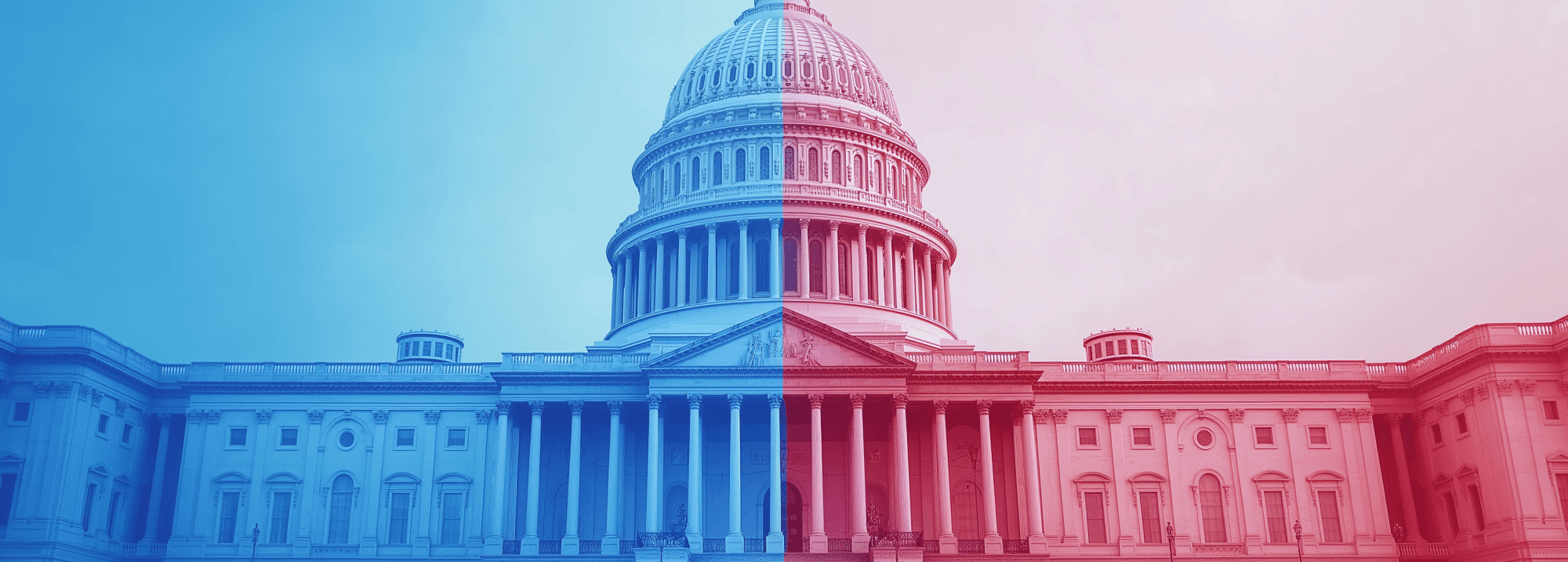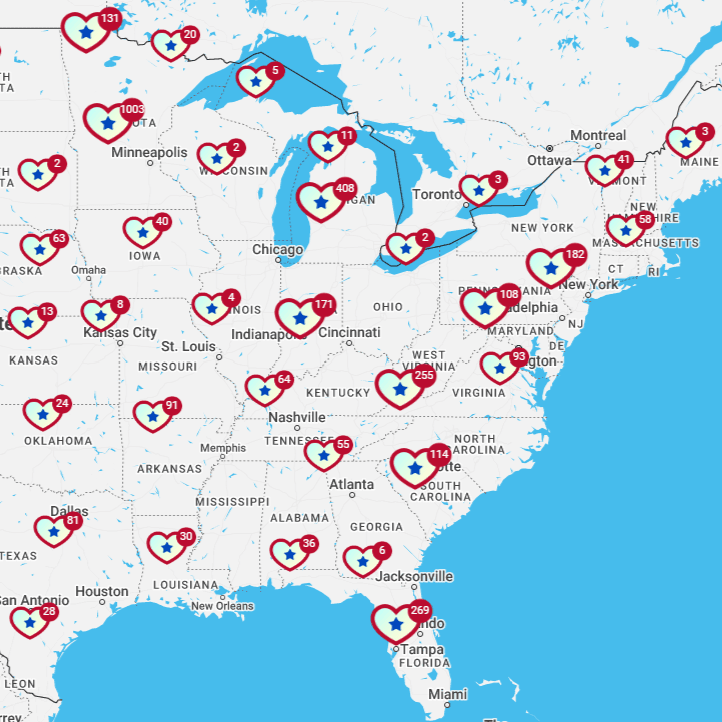
Two-Party System Pros and Cons: How It Shapes Governance and Policy
“In a two-party system, if both parties ignore public opinion, there is no place voters can turn.” ~ Historian and political activist, Howard Zinn
The two-party system has long defined the political landscape of the United States. From presidential elections to local races, candidates are usually either Democrats or Republicans.
While adhering to the establishment party structure provides certain benefits, it also comes with significant drawbacks that impact governance, policy, and, ultimately, the representation of the American people.
Join us as we explore the main pros and cons of the two-party system, highlighting why it persists and the growing movement to disrupt its dominance.
Cons of the Two-Party System
While the two-party system has historically helped foster stability, it also generates significant problems for U.S. governance and policy. America’s two-party system’s pros and cons must be weighed carefully, as many of the cons have intensified in recent years.
#1: Lack of Political Diversity
A major con of the two-party system is the lack of political diversity, despite parties’ claims of having a big tent under which to house a variety of viewpoints. With only two major parties dominating the political arena, a wide range of viewpoints are excluded from mainstream discourse.
Voters with more nuanced or specific political views often feel unrepresented by either party. This leads to the marginalization of minority voices and limits policy innovation, as new ideas that don’t fit into the two-party mold are rarely explored or debated.
For voters whose beliefs fall outside the platforms of the two dominant parties, the system often feels stifling. While third-party or independent candidates often run for office, they can face tremendous barriers to success, leaving voters with limited choices. The result is that many citizens feel they must choose between two imperfect options or disengage from politics altogether.
#2: Increasing Political Polarization
Another significant drawback of the two-party system is its tendency to foster political polarization. In a two-party system, politics often devolves into an "us vs. them" mentality, where each party views the other as the enemy. This has become more pronounced in recent years, as media outlets and political leaders increasingly emphasize differences rather than seeking common ground.
As both Democrats and Republicans focus on energizing their respective bases, there is less incentive to compromise, leading to a deeply divided political environment. This polarization affects not only political debates but also the way ordinary citizens perceive each other. The lack of middle ground fosters an increasingly toxic culture where bipartisan cooperation is rare, making it difficult to address critical issues.
#3: Stagnation and Gridlock
One of the most frustrating aspects of the two-party political system’s pros and cons is its role in creating stagnation and gridlock. When one political party controls the executive branch while the other holds a majority in the legislature, it can lead to legislative paralysis. Both parties, driven by a desire to block the other from achieving success, often refuse to compromise, leading to inaction on pressing issues.
This dynamic frequently plays out on the national level, with major policy initiatives stalling in Congress. Gridlock prevents the passage of meaningful legislation and erodes public trust in the government's ability to address challenges such as healthcare reform, infrastructure development, and climate change.
#4: Lack of True Representation
Despite the few pros of the two-party system, the system often fails to provide true representation for large segments of the population. Many Americans feel disconnected from both the Democratic and Republican parties, believing that neither reflects their values or priorities. This is particularly true for independent voters, who now make up a sizable portion of the electorate.
The two-party system also discourages political participation by creating a sense of futility for those who do not align perfectly with either major party. As a result, voter turnout suffers, and many important perspectives are left out of the political conversation. In addition, the focus on winning elections over representing all citizens can skew policy priorities toward the interests of the most active and well-funded voters rather than the general population.
Pros of the Two-Party System
Though critiques of the two-party system are plentiful, the two-party system does offer a few advantages. The predictability and structure it provides are valued by some, particularly in fostering political stability and moderation.
#1: Stability and Simplicity
One of the pros of the two-party system is its simplicity. With just two dominant parties, voters face a clearer choice during elections. This contrasts with multi-party systems where numerous parties can fracture support and create coalitions that may not always align with voters' priorities. By limiting the options to two major platforms, this system reduces voter confusion and can prevent the formation of fragile, unstable governments.
In addition to simplifying voting, the two-party structure offers a sense of political stability. Throughout American history, power has alternated between two parties with few shocks to the system. This continuity helps prevent extreme swings in policy and leadership, allowing for smoother transitions after elections.
#2: Encouraging Moderation
Another benefit of America’s two-party system is that, at least in theory, it encourages political moderation. In a country as diverse as the United States, the need to attract broad support often pushes parties to adopt more centrist positions, especially in presidential elections. Both Democrats and Republicans tend to focus on winning over swing voters, moderating their platforms to appeal to a larger base. This process can prevent extreme ideologies from taking over mainstream politics, thus maintaining a more balanced approach to governance.
The Movement to Disrupt the Two-Party System
Growing dissatisfaction with the two-party system’s pros and cons has fueled a movement to disrupt its dominance.
Grassroots movements, such as those helmed by GoodParty.org and advocates for alternative voting systems, are working to open the political landscape to more diverse candidates and ideas. Independent and third-party candidates face systemic challenges, but efforts to reform electoral laws, expand ballot access, and reduce the influence of money in politics aim to level the playing field.
Voters are calling for open primaries and alternative voting systems like ranked choice voting, which allows for more nuanced preferences and gives third-party candidates a fairer chance to compete. This shift could help break the stranglehold of the two-party system and encourage a more representative and dynamic political landscape.
Final Thoughts
As more voters demand change, the future may hold opportunities for new political structures that challenge the two-party norm and offer more choices to the electorate. The U.S. two-party system has provided stability and simplicity, but its limitations — especially in terms of representation, diversity, and polarization — are becoming harder to ignore.
A deeper dive into the two-party system’s pros and cons reveals a need for reform to create a political environment that better reflects the full range of American perspectives.
Become part of the growing movement toward a more representative democracy by joining the GoodParty.org Community.
